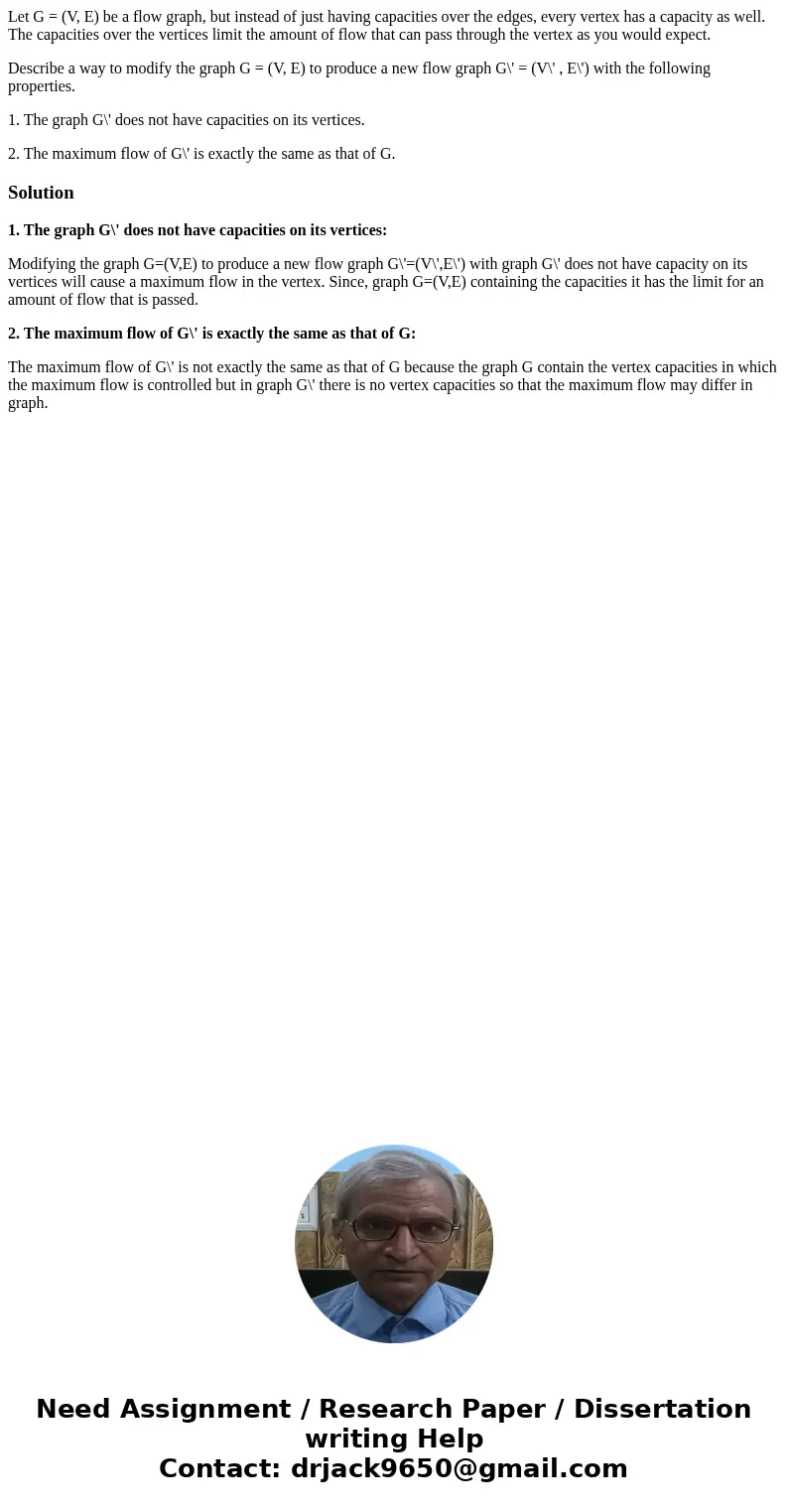Let G V E be a flow graph but instead of just having capaci
Let G = (V, E) be a flow graph, but instead of just having capacities over the edges, every vertex has a capacity as well. The capacities over the vertices limit the amount of flow that can pass through the vertex as you would expect.
Describe a way to modify the graph G = (V, E) to produce a new flow graph G\' = (V\' , E\') with the following properties.
1. The graph G\' does not have capacities on its vertices.
2. The maximum flow of G\' is exactly the same as that of G.
Solution
1. The graph G\' does not have capacities on its vertices:
Modifying the graph G=(V,E) to produce a new flow graph G\'=(V\',E\') with graph G\' does not have capacity on its vertices will cause a maximum flow in the vertex. Since, graph G=(V,E) containing the capacities it has the limit for an amount of flow that is passed.
2. The maximum flow of G\' is exactly the same as that of G:
The maximum flow of G\' is not exactly the same as that of G because the graph G contain the vertex capacities in which the maximum flow is controlled but in graph G\' there is no vertex capacities so that the maximum flow may differ in graph.

 Homework Sourse
Homework Sourse